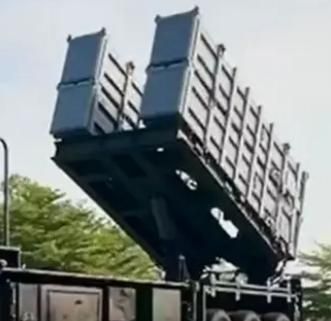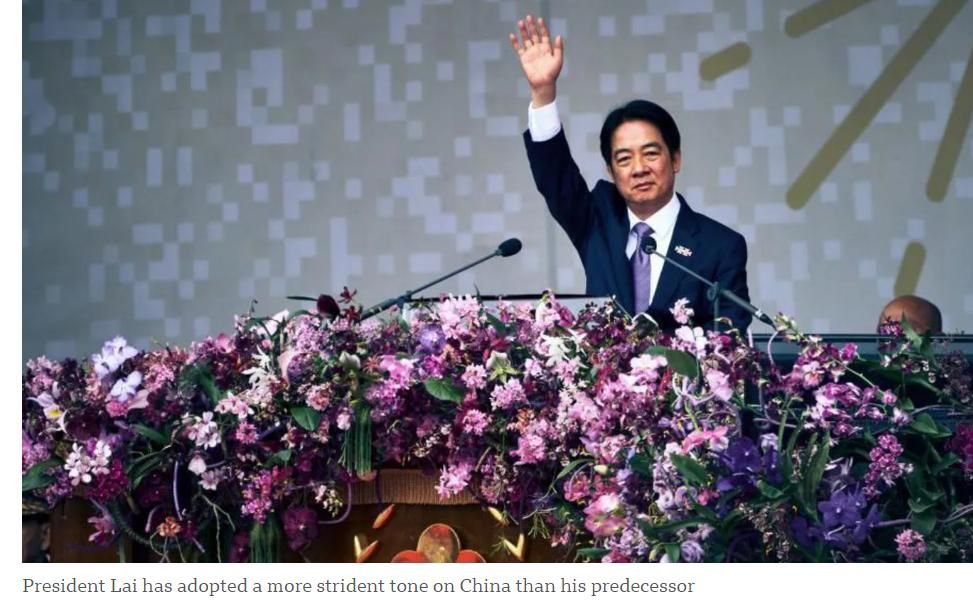By Eric Vandenbroeck and co-workers
China is holding
military exercises around Taiwan, in what it calls a "stern warning"
against those seeking "independence" from the self-ruled island.
The important this is the fact that the US has
vowed to come to the defense of Taiwan if attacked by China.
Why the Taiwan issue is so complex and can China
simple take it?
China’s gray-zone
activities in the Taiwan Strait should not be viewed as a mere prelude to an amphibious invasion. Rather, Beijing’s persistent
use of similar tactics in nearby waters suggests such actions are the primary
methods in a patient, long-term strategy aimed at subjugating Taiwan without
resorting to an invasion.
The drills are seen as
a response to a speech by Taiwanese President William
Lai last week, in which he vowed to resist "annexation" by
Beijing.
Since 2022 the tempo of Chinese operations has
remained high, with daily incursions across the median line going up and down
depending on what signals China wants to send – to its people, to Taiwan, and
to Taiwan’s allies. And since Lai Ching-Te’s election
in January, the tempo of operations has increased again – quite dramatically.
In May 2024, after President Lai’s inauguration, Also large-scale
drills were announced – called Joint Sword 2024A – they were described by China
as its largest so far, combined operations of air and sea and missile forces,
which “surrounded” Taiwan from all sides – simulating a blockade.
Today we are seeing
the long-expected Joint Sword 2024B – which China is describing as again
surrounding Taiwan with combined operations practicing to fight in "all
weather conditions". It is very good weather in and around Taiwan this
week, so that claim seems more rhetorical than real.
Among the flood of
commentaries and remarks from the Chinese side, today is an analysis of
something different about the drills this time: the starting hour.
The drills started
before dawn today, Beijing says. And the reason, according to one Chinese
military expert, is to show more teeth.
In a video released
by CCTV-affiliated social media account Yuyuan
Tantian, Fu Zhengnan of the PLA Academy of Military
Science said a new notable feature of today's drills is its focus on simulating
"all-weather" conditions, which makes the "atmosphere of real
combat even stronger".
The operations were launched
before dawn and during nighttime, and the forces were ready to shift from
training to combat "at any moment", he said.
Since 2022 the tempo of Chinese operations has
remained high, with daily incursions across the median line going up and down
depending on what signals China wants to send – to its people, to Taiwan, and
to Taiwan’s allies. And since Lai Ching-Te’s election
in January, the tempo of operations has increased again – quite dramatically.
In May 2024, after
President Lai’s inauguration, further large-scale drills were announced – Joint
Sword 2024A – they were described by China as its largest so far, combined
operations of air and sea and missile forces, which “surrounded” Taiwan from
all sides – simulating a blockade.
Today we are seeing
the long-expected Joint Sword 2024B – which China is describing as again
surrounding Taiwan with combined operations practicing to fight in "all
weather conditions". It is very good weather in and around Taiwan this
week, so that claim seems more rhetorical than real.
The Taiwanese defense
ministry has released footage of its military responding to the Chinese drills.
It shows air defense
launchers, military vehicles, and a naval vessel being maneuvered into
position.

Earlier, the ministry
said the Taiwanese military would monitor Chinese threats but avoid any
escalation or direct clashes.
With today's
exercise, China is sending a message to Taiwanese President William Lai that
moves towards "Taiwan independence" are bound to meet a "dead
end", an analyst told Chinese state media.
The drills aim to
have a "more intense deterrent effect" on what China considers as
"separatist forces", Professor Zhang Chi from China PLA National Defence University tells CCTV.
"The more the
separatist forces dare to provoke, the further the PLA will advance. The closer
the separatists align with external forces, the tighter the chain of Taiwan's
blockade will become," he says.
China is also ramping
up its production of drones, which it has used in
exercises around Taiwan. China North Industries Group, or Norinco, recently unveiled a new kamikaze drone with a
range of 124 miles and a cruising speed of 90 miles per hour.

Taiwan's Ministry of
Defense has condemned what it describes as "irrational and provocative
behavior" by China, adding it is ready to
defend itself.
Taiwan's transport
ministry says air traffic and port operations remain "normal" despite
the military drills off the coast.
Taiwan's ally, the US,
says it is monitoring the drills.
China is a
springboard hear many tell it, the future of the United States’
security—and, indeed, the world’s—rides on
Taiwan. A self-governing
Taiwan anchors Japan’s defense and denies China a springboard from which it
could threaten U.S. allies in the western Pacific. On the topic of Taiwan,
contemporary analysts often invoke General Douglas MacArthur’s description of the
island as “an unsinkable aircraft carrier” and “submarine tender.”
Beijing also mounted
drills around Taiwan after Lai was sworn in as president earlier this year.
Taiwan's President William
Lai has released a new statement saying the country's military and coast guard
are "holding their positions" at sea and in the air amid ongoing
Chinese military exercises.
He says the Chinese
drills are "intended to disrupt regional peace and stability" and
constitute an attempt to coerce China's regional neighbours
by using force.
The statement goes on
to say the government will protect Taiwan's democratic system and national
security "in the face of external threats".
His office had earlier this
morning said China should
"refrain from military provocations".
The Chinese military
says it launched this round of exercises in response to remarks made by Lai in
a speech a few days ago, in which he vowed to resist any efforts to exert
control over Taiwan.
"Scared"
and "desensitized" - here's how people on the streets of Taipei are
talking about China's fresh wave of military exercises around the self-ruled
island.

These Military Drills By China’s People’s Liberation
Army (PLA) Are All About Intimidation.
Beijing has long
vowed to "reunify" Taiwan with the mainland, by force if necessary,
and to do so well before the centenary of the founding of the Chinese Communist
Party (CCP) in 2049.
Ideally, it would
like this to happen without a shot being fired in anger and for Taipei to
voluntarily submit to its rule - but Taiwan’s population has watched aghast at
the recent suppression of democracy across the water in Hong Kong, and most
people are even less keen than before on being ruled by a one-party Communist
autocracy.
Beijing’s response is
to remind Taiwan of its overwhelming strategic superiority. It has recently
embarked on a massive military build-up in all areas: hypersonic missiles,
aircraft carriers, nuclear warheads, and fifth-generation combat aircraft. The
PLA Navy is now the largest in the world and still growing.
And yet a full-scale
invasion of Taiwan would be something of a last resort for the CCP. It would be
hugely costly, both in terms of manpower and economic damage to the global
economy.
For Beijing, there is
also the big unknown factor: just how far is the US prepared to go to defend
Taiwan?
China has increased its military investment under Xi
Jinping


So far, the maneuvers
have fallen short of an invasion and stayed within a grey zone, which is
military speak for tactics that fall between war and peace.
But Taiwan is now
seen as a tinderbox in what has become a volatile US-China relationship - and
analysts say grey zone tactics are part of Beijing's strategy to control Taipei
without firing a single shot.
For updates click hompage here